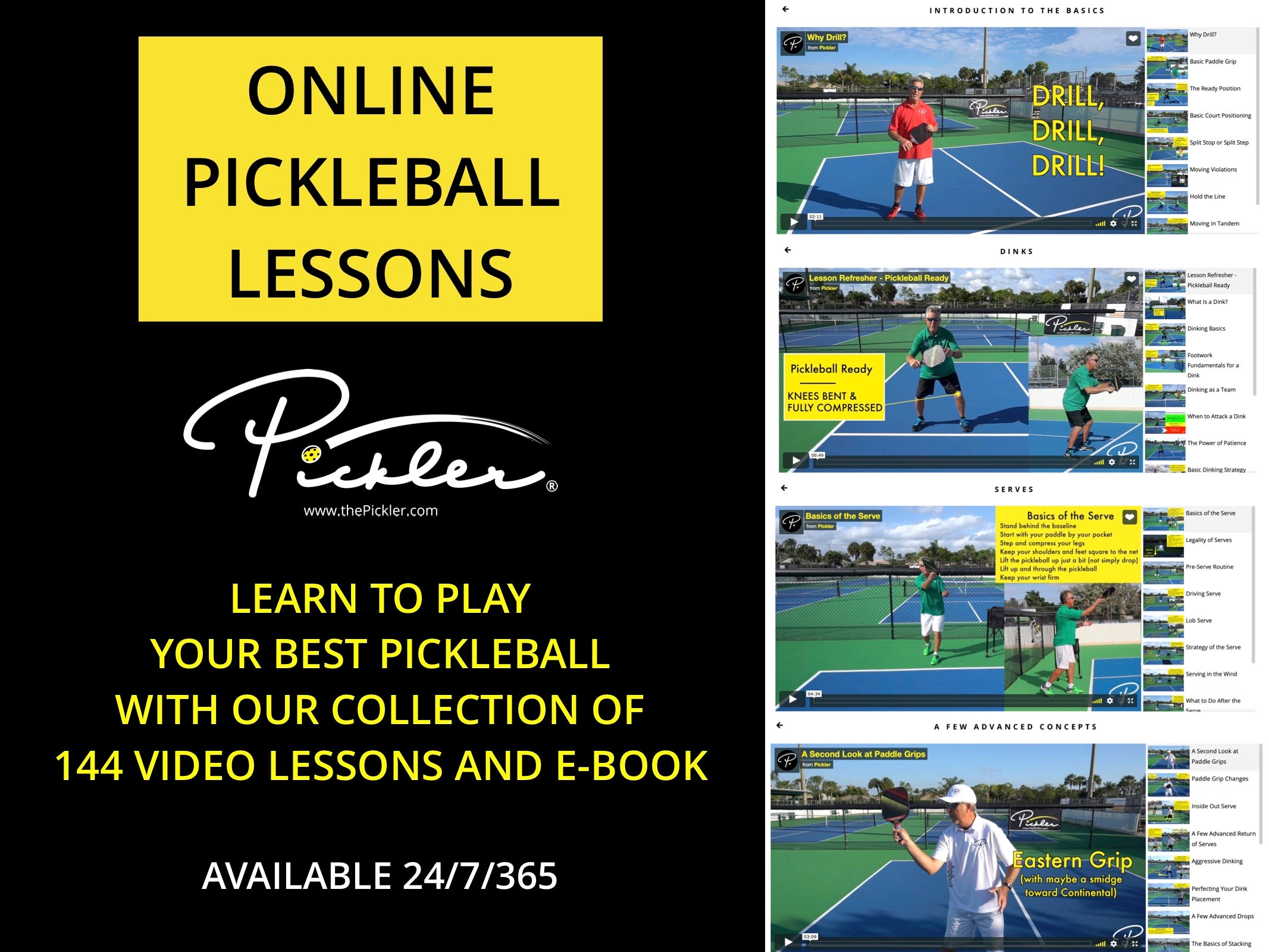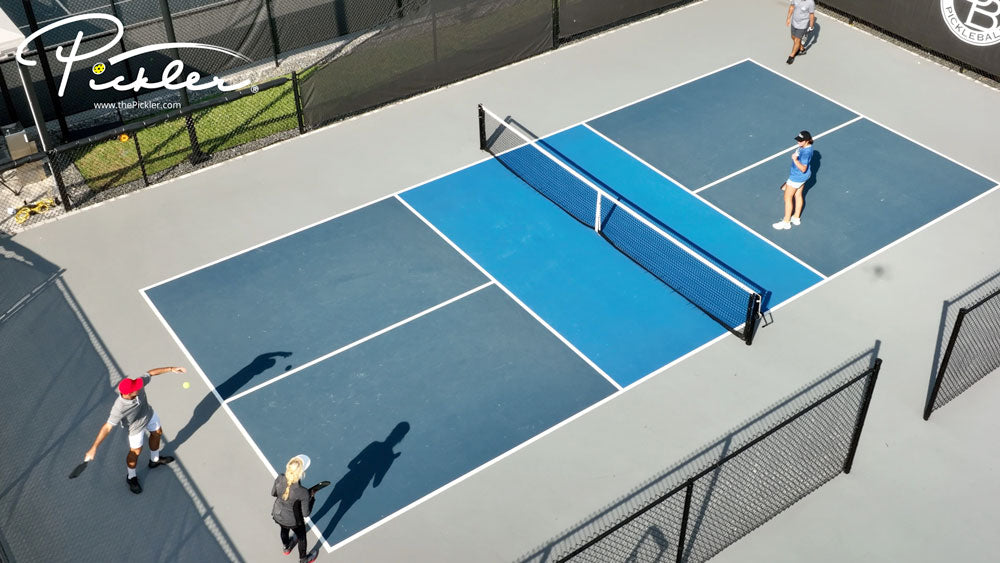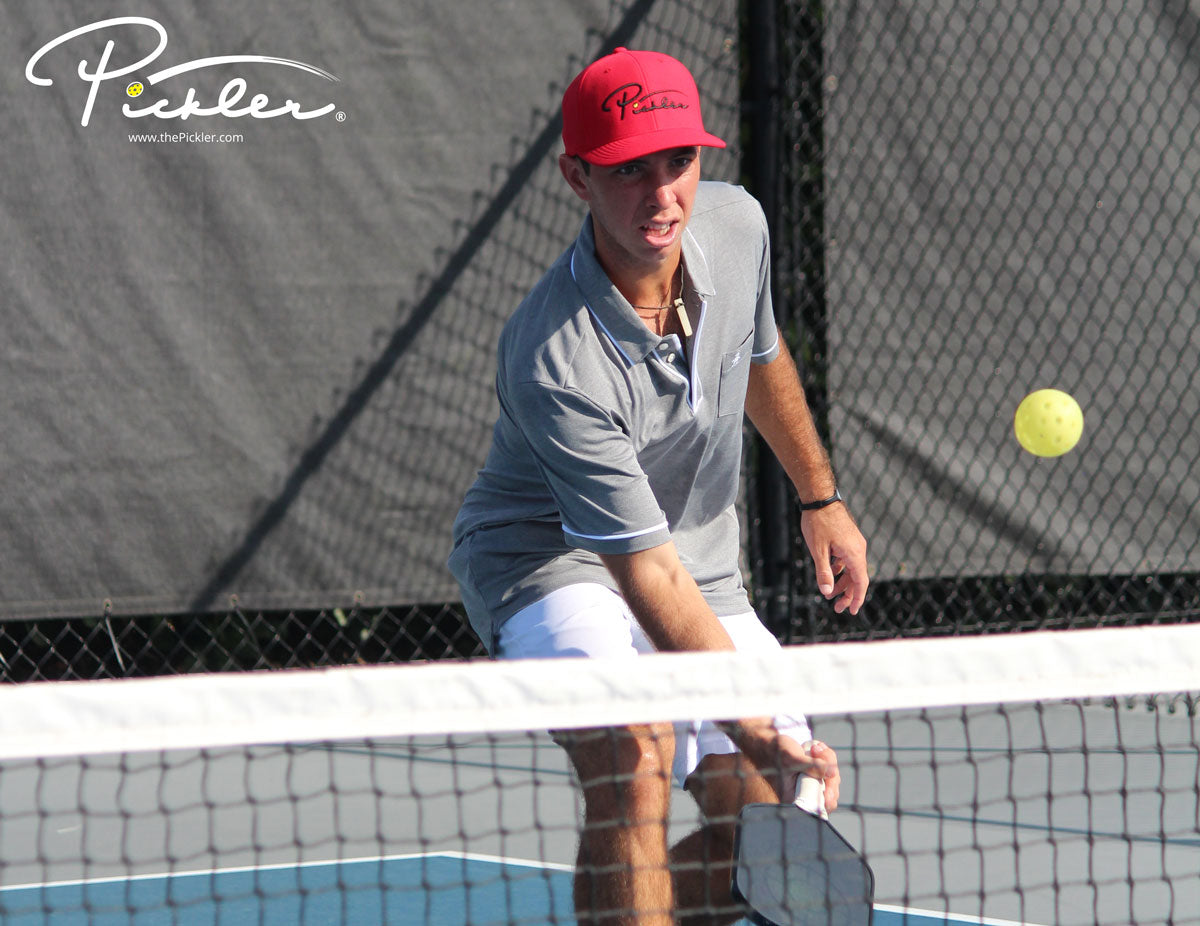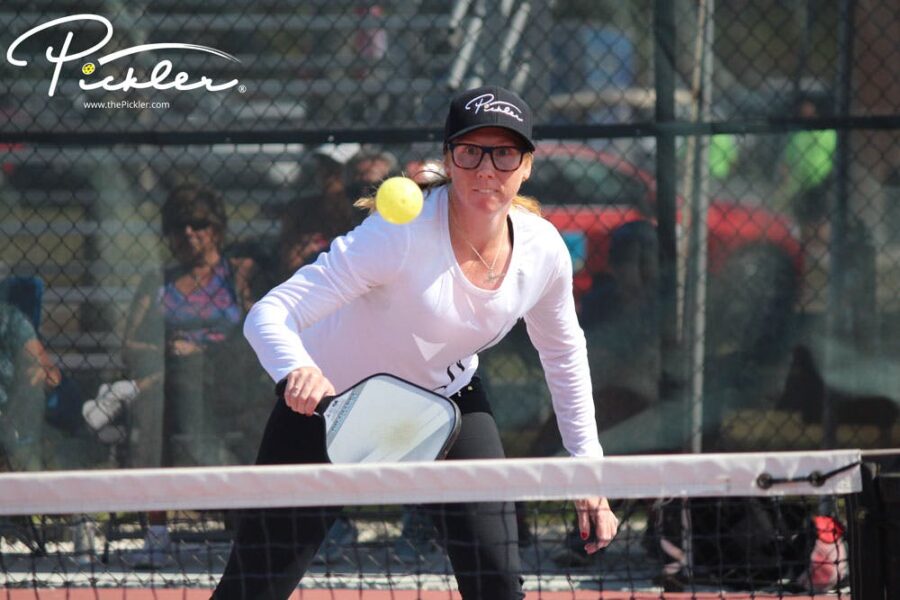Stacking is a must-know pickleball strategy if you are looking to improve your on-court play and strategy skills. Whether you are new to stacking or looking for some tips to improve your stacking skills (i.e. you are losing too many points unwinding the stack), then this blog on how to stack in pickleball is for you.
Before we dive in, this pickleball blog discusses how to stack. If you are looking for information on what is stacking in pickleball, or why to do it, then check out Pickler’s “What Is Stacking in Pickleball & Why Do It” article. Then, head back here to dive into how to master the stack on the pickleball courts.
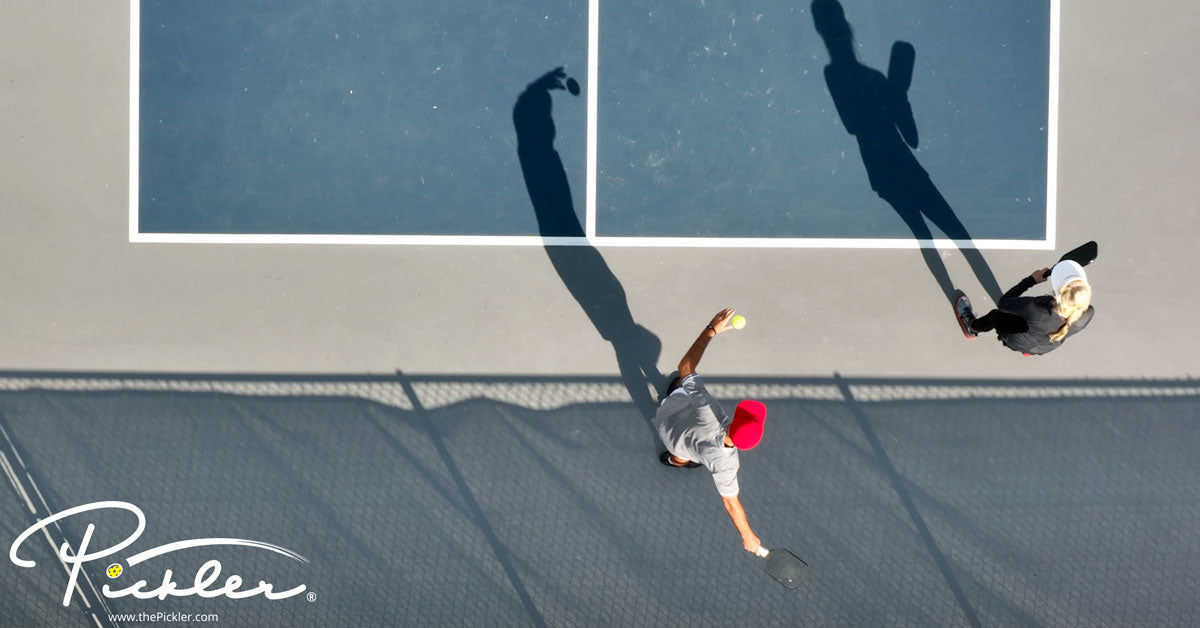
Stacking as the Serving Team
As a reminder, in traditional pickleball, the players in doubles pickleball must switch sides of the court after each point is scored. But, these players do not have to stay in those positions. If you are on the serving team, you can switch sides after the serve. This is where stacking comes in.
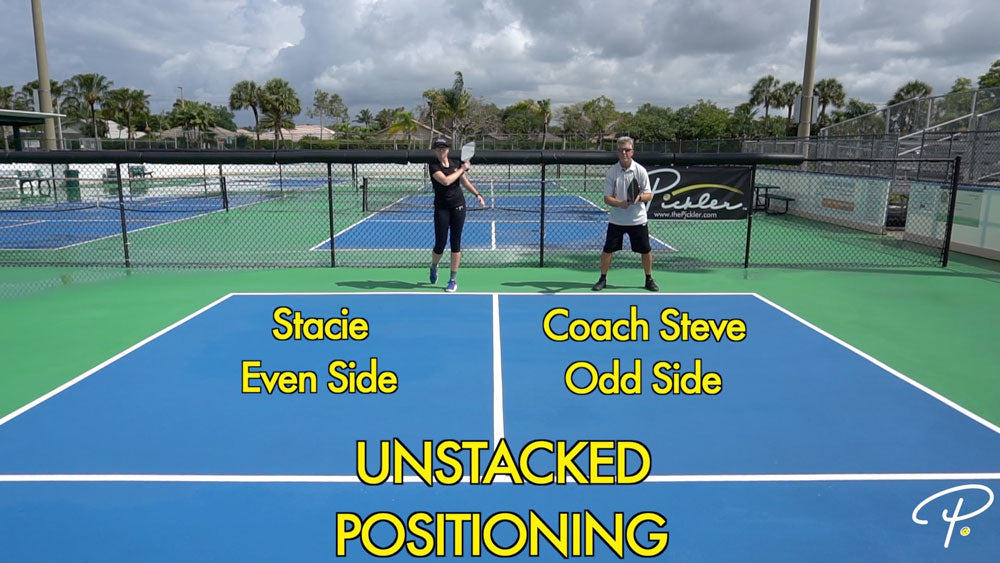
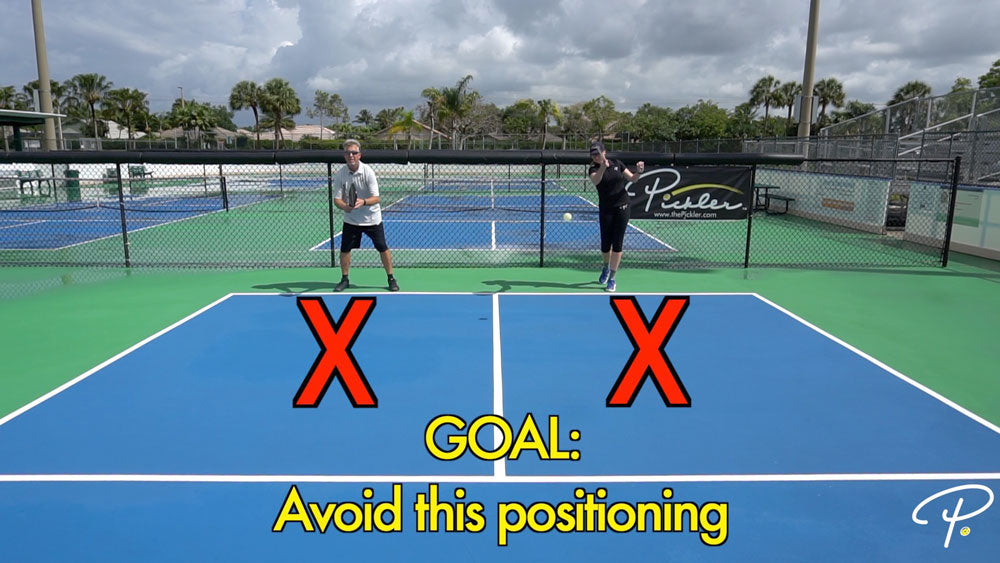
The simplest form of stacking is when you and your partner are the serving team. Generally, you will start a game “unstacked.” In other words, you will start a game in your “normal” positions—the player starting on the right-hand side of the court will be on the right side, and the player starting on the left-hand side of the court will be on the left side. Then, after a point is scored, the first server will move to the left-hand side of the court. To stack, his or her partner will stand to the left of the first server (instead of moving to the right-hand side of the court).
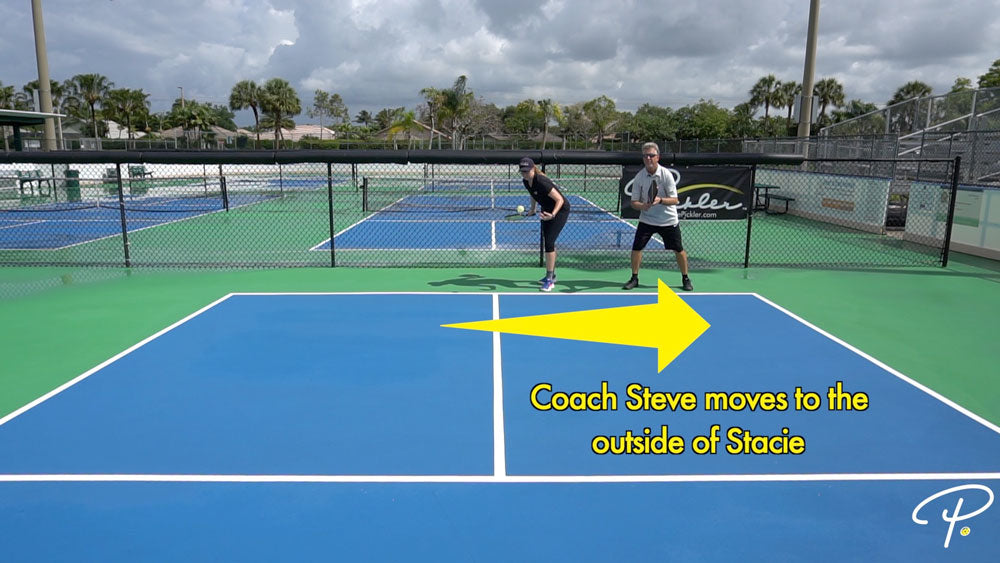
Once the first server serves the pickleball, each player—the first server and the partner—will take a step to the right and assume the normal positions again.
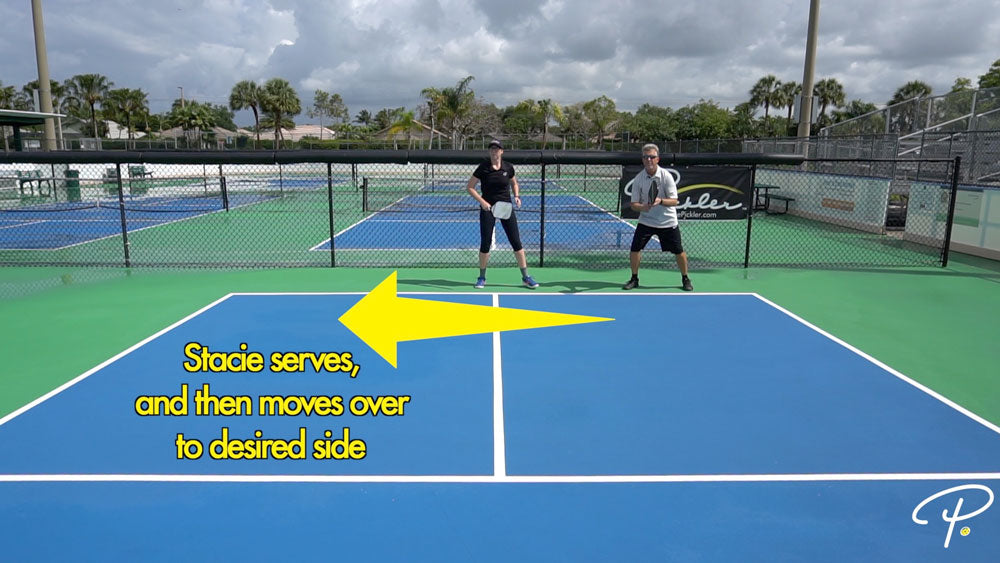
The same goes for the second server—if the second server must serve from the right-hand side of the court, then his or her partner will stand to the right of the second server.
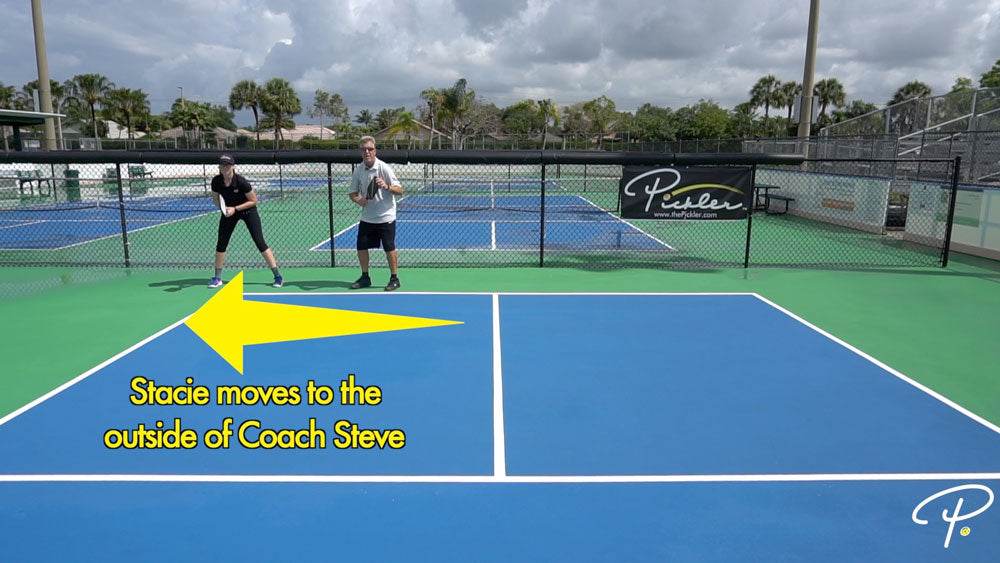
Once the second server serves the pickleball, each player—the second server and the partner—will take a step to the left and assume the normal positions again.
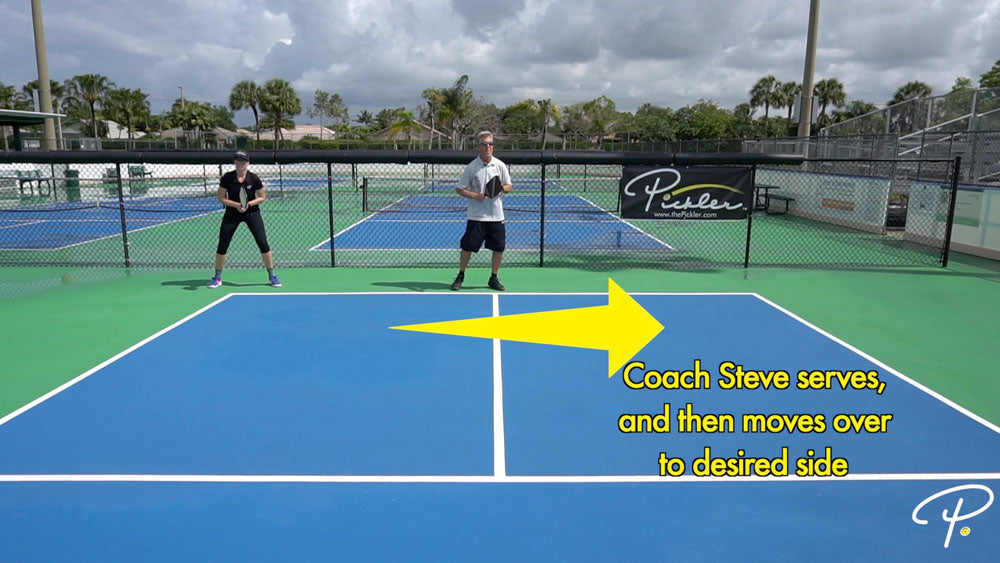
Stacking can be confusing, so it is important to pay attention to the score. Assuming that you started the game unstacked, a good rule of thumb is to remember that you and your partner should only stack when you have an odd number of points—1, 3, 5, 7, 9, etc. If you have an even number of points—0, 2, 4, 6, 8, 10, etc.—you and your partner should be unstacked and in your “normal” positions. Also, to note, if you get lost on the pickleball court, don’t forget that you can ask the referee (when you have one) if you are in the correct position.
Stacking as the Receiving Team
The more difficult form of stacking is when you and your partner are on the receiving team. Again, generally, you will start a game “unstacked” and in your “normal” positions. However, if you and your partner have one point, then you and your partner will be on opposite sides to the ones that you started on.
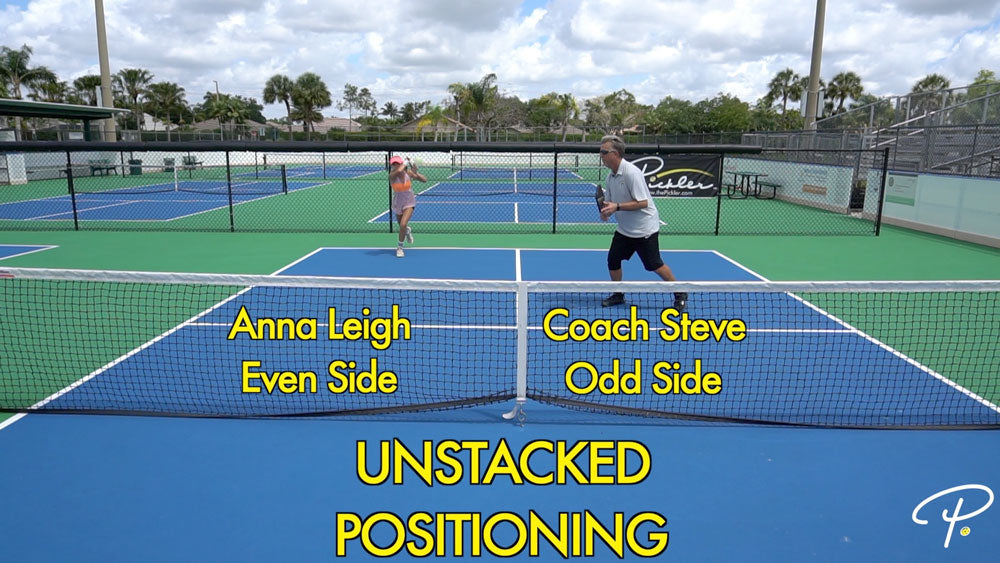
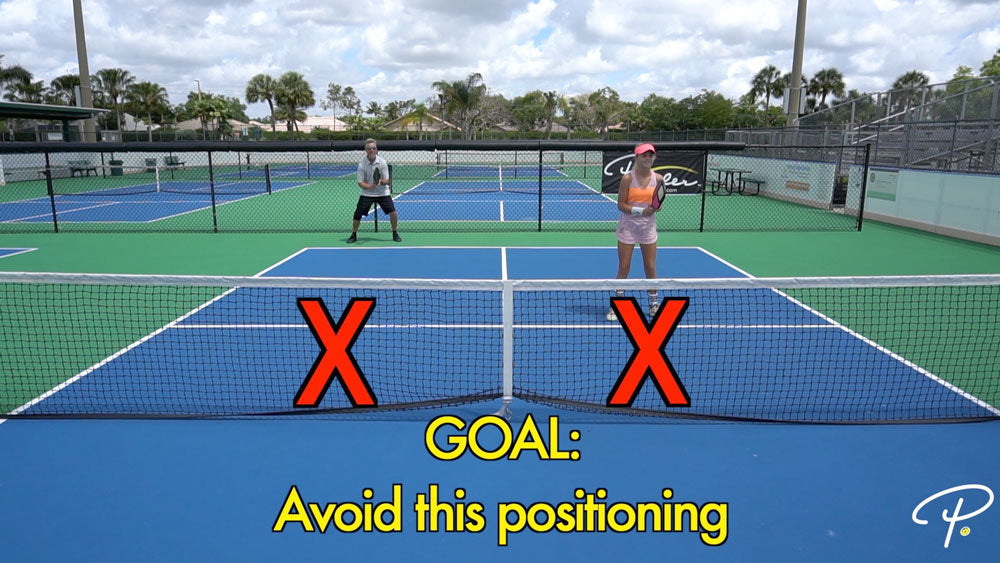
Assuming your partner is the first server, you will be required to switch sides with your partner and take the return of serve from the right-hand side of the court. Although you are required to hit the return of serve from the right-hand side of the court, you and your partner can switch sides of the court after you hit your return, so that you each play the remainder of the rally on your preferred side.
To accomplish this, you and you partner have two options for stacking as the receiving team:
- Traditional Stacking – The first option is for you to receive the serve, like normal, and for your partner to stand at the Non-Volley Zone line just out-of-bounds to the right of the pickleball court. Once you strike your return of serve, both you and your partner will shift on the court to the left. You will have to work a little harder to go across the court from the right-hand side baseline to the left-hand side Kitchen line.
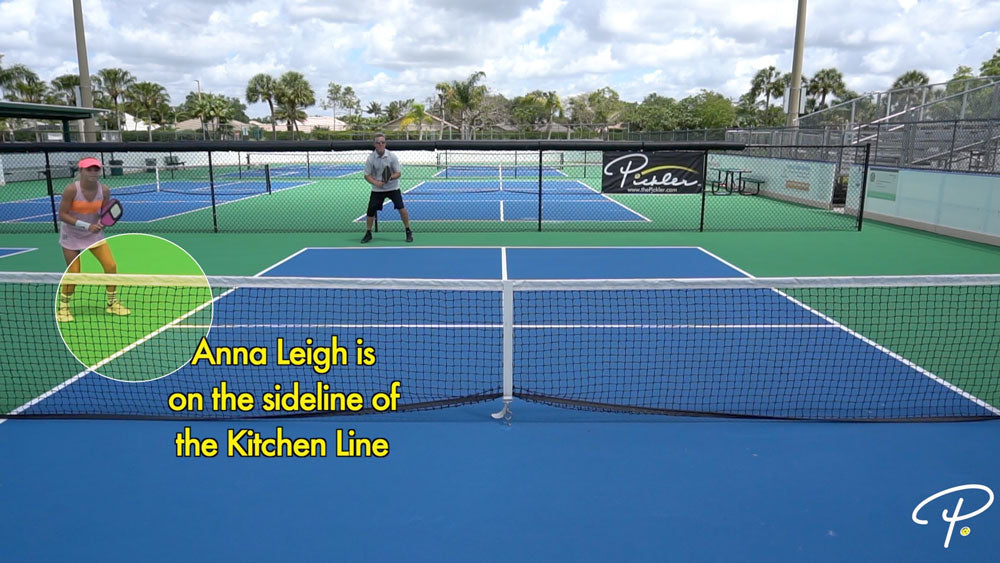
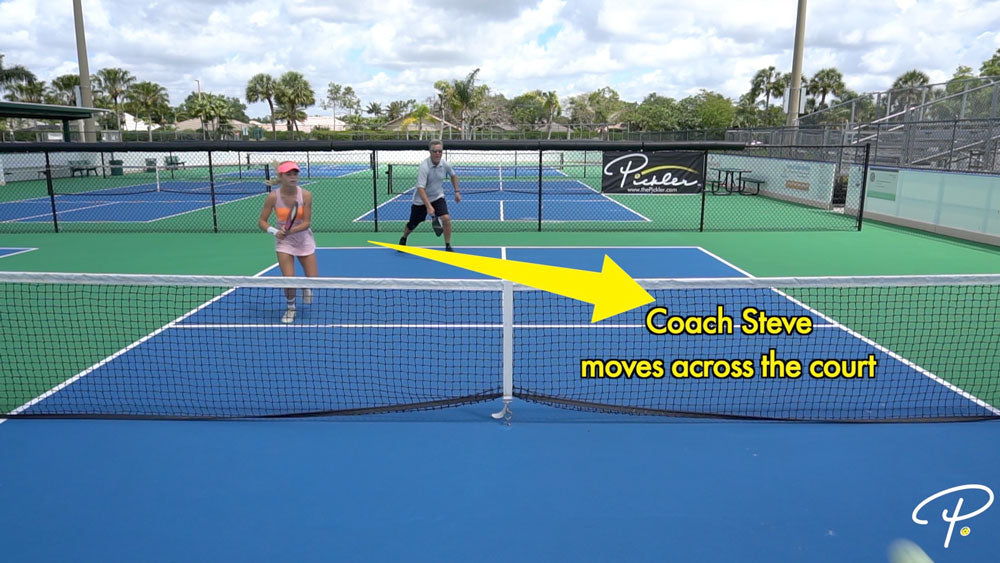
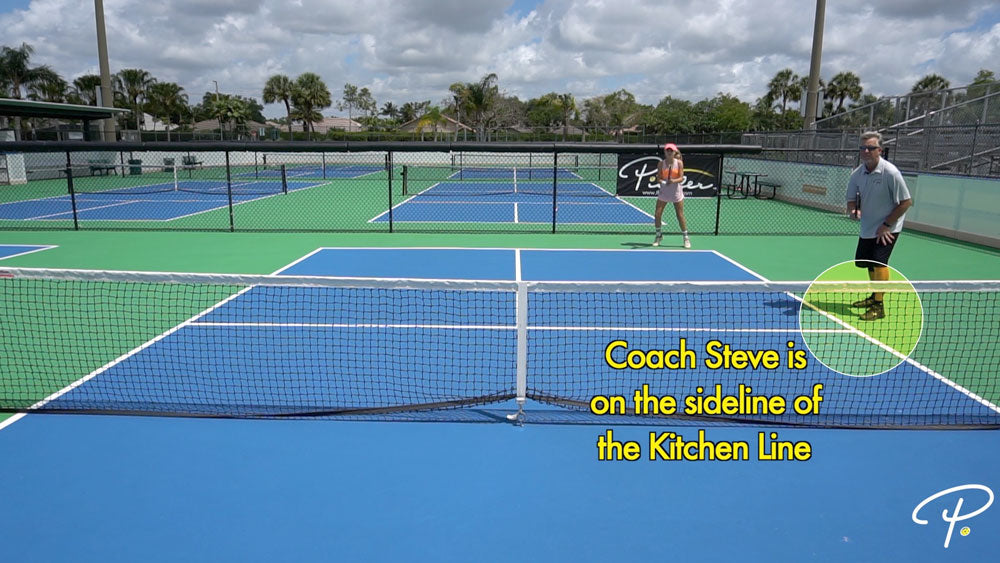
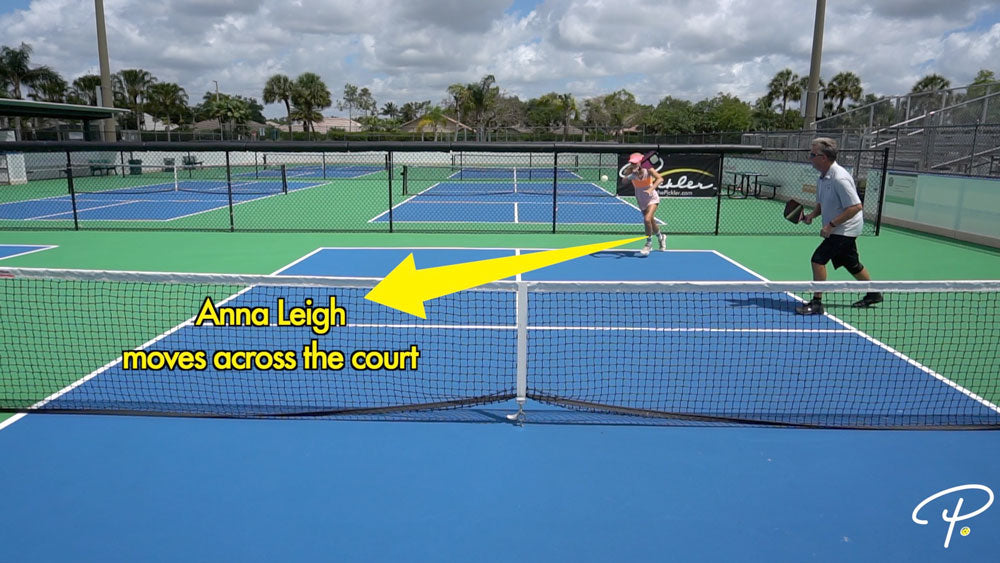
- Switching – The second option is for you to receive the serve, like normal, and for your partner to stand at the Non-Volley Zone line on the left-hand side of the pickleball court, which is also like normal. However, upon your return of serve, you and your partner should switch sides. Again, like the first option, you will have to work a little harder to go across court from the right-hand side baseline to the left-hand side Kitchen line. However, unlike the first option, your partner will slide over in the middle of the pickleball court (rather than coming into the court from the starting position off the court).
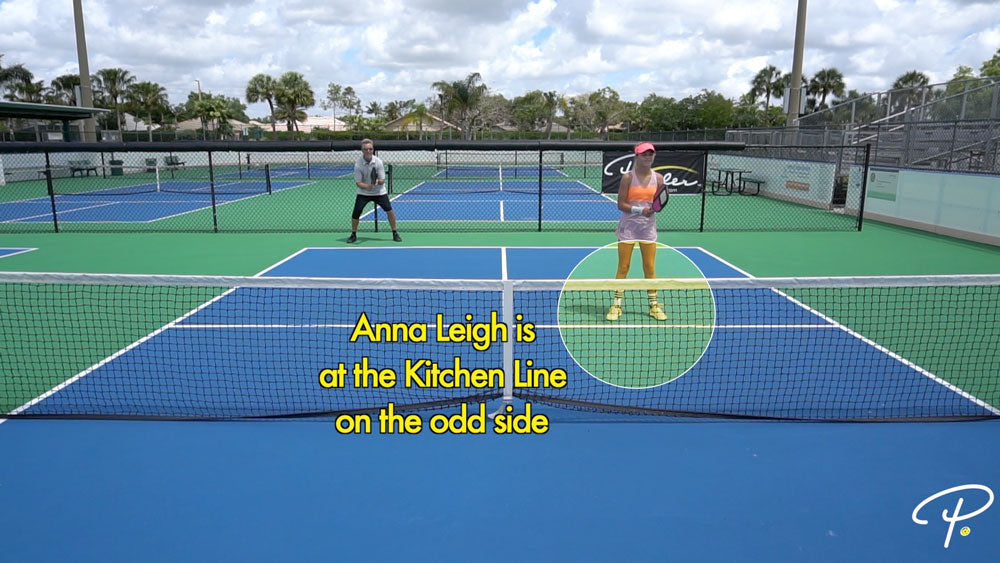
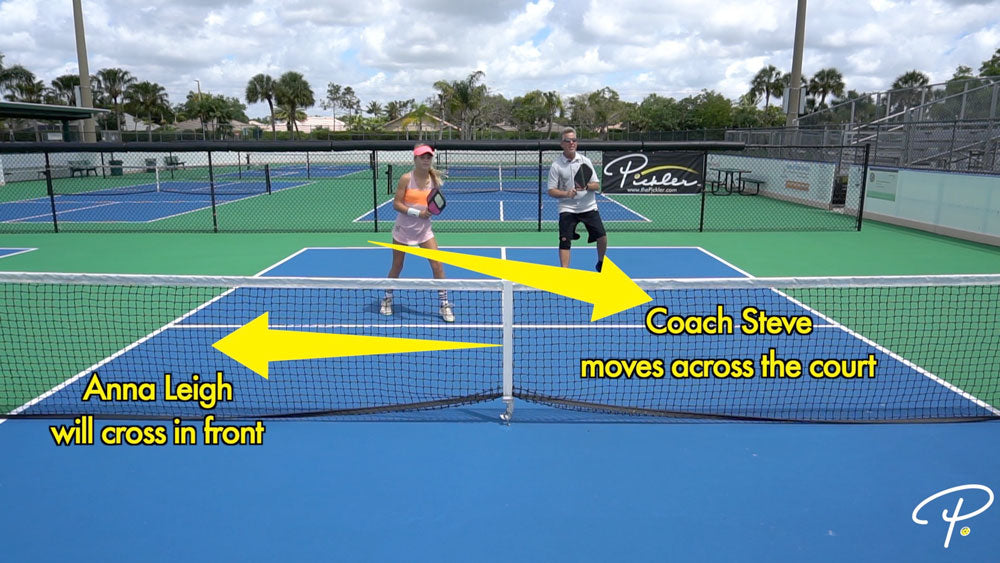
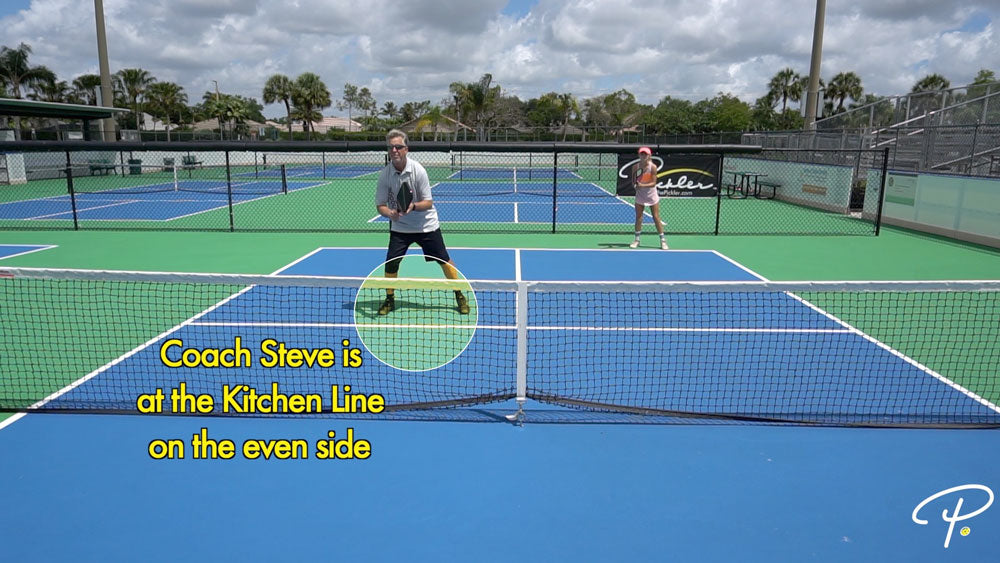
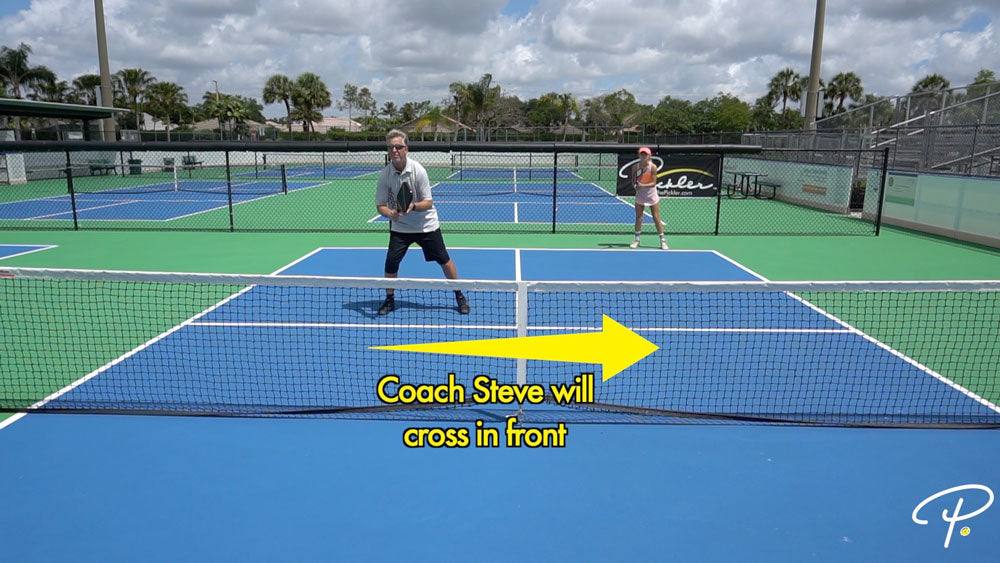
- The middle of the court is generally covered because your partner is starting on the court instead of in the out-of-bounds area (like in the first option);
- You and your partner can keep your opponents guessing on whether or not you and your partner are actually stacking or not by only taking advantage of the switch in certain circumstances and adding a fake switch to your repertoire; and
- You can abort the stack/switch if your opponents give you a strong serve that makes it too difficult to recover and travel across the pickleball court to switch sides.
- Because the switch happens on the pickleball court, there is a moment of time when the receiving player is blinded on the court by his or her partner. This momentary loss of sight of the pickleball can lead to increased errors on the pickleball court; and
- This switching approach requires extra partner communication (typically, through the use of hand signals) to make sure you and your partner are on the same page with the game plan. This extra layer can lead to miscommunication between partners if a sign is missed or misinterpreted.
Again, stacking can be confusing, so it is important to pay attention to the score. Assuming that you started the game unstacked, a good rule of thumb is to remember that you and your partner should only stack when you have an odd number of points—1, 3, 5, 7, 9, etc. If you have an even number of points—0, 2, 4, 6, 8, 10, etc.—you and your partner should be unstacked and in your “normal” positions. Also, to note, if you get lost on the pickleball court, don’t forget that you can ask the referee (when you have one) if you are in the correct position.
Tips to Master Stacking in Pickleball
Stacking can give you an edge on the pickleball court, as you are able to manipulate which side of the pickleball court you and your partner would like to play on. This is particularly true when you are the serving team, as stacking only takes one or two steps. However, as noted above, when you are stacking as the receiving team, it becomes difficult because you have more ground to cover to switch sides of the court after the return of serve. Many doubles pickleball teams—at all levels—lose a lot of points when stacking.
To help you master the stack, try the following additional pickleball tips:
- Switching and Faking – To keep your opponents guessing on the pickleball court, consider switching and faking the switch in only certain circumstances. To do this, take advantage of hand signals to communicate with your partner prior to the serve. For instance, flash a fist to your partner to remain in the normal positions and either do nothing or fake switch, and flash an open hand to your partner for a switch. And, be sure to verbally confirm your hand signals with your partner to avoid any miscues on the pickleball court.
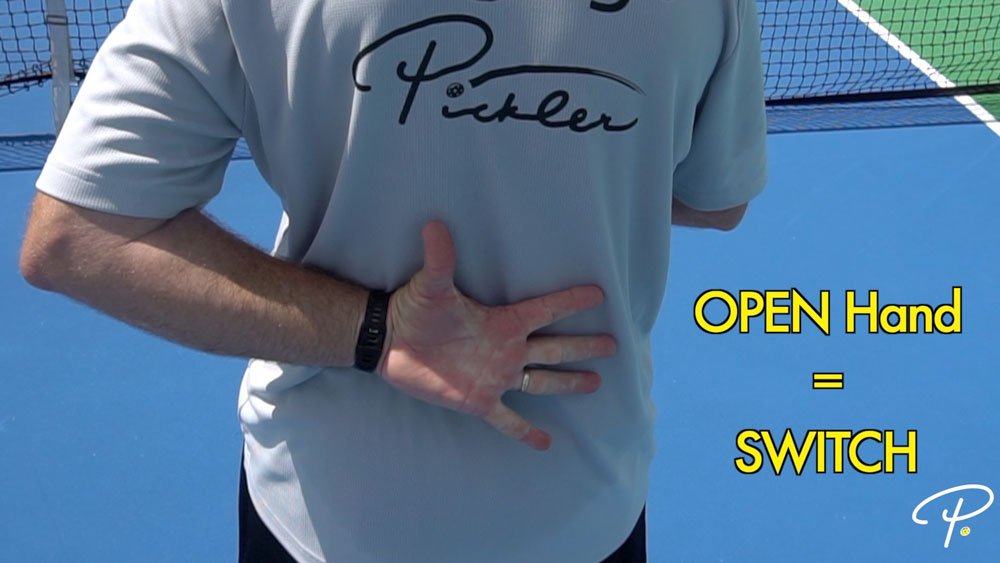
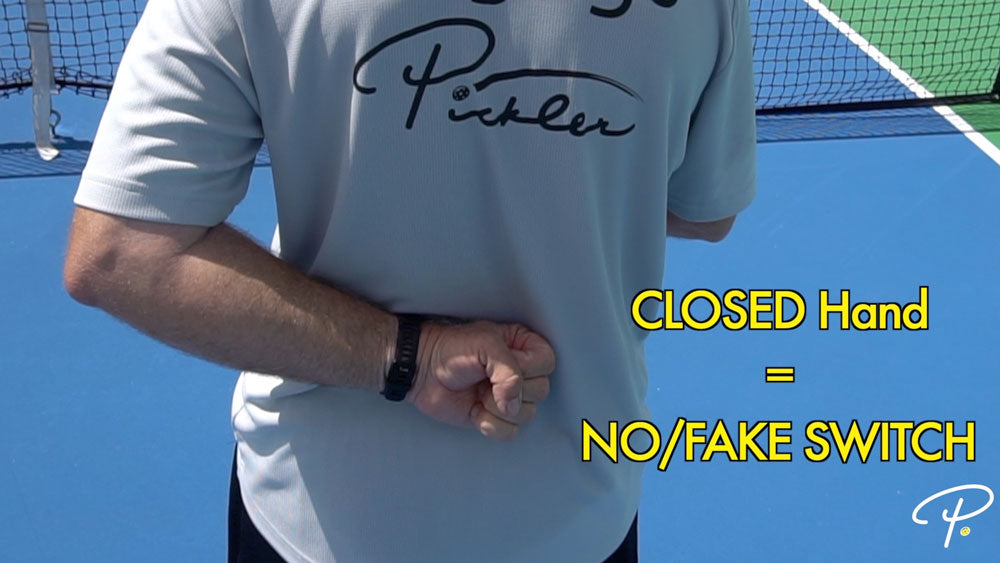
Again, try switching and fake switching to throw your opponents off guard and to give them a different look if you find you are struggling to breakthrough against your opponents. Remember, if things are not working on the pickleball courts, make a change and change the look that you are giving your opponents.
- Know Where and How to Hit Your Return of Serve – If you are getting beat by your opponents when you are stacking as the receiving team, ask yourself if your return of serve has anything to do with it. Is your return of serve setting your opponents up for an easy third shot that is putting too much pressure on you and your partner running across the court? If so, then you need to focus on your return of serve.
- Do not rush your return. Oftentimes, when stacking, you may be too worried about running across the court, so you are moving when hitting your return, which may result in unforced errors (e.g., returns of serve that sail out of bounds). Be sure to hit a quality return and then move to your next location. Do not rush your shot.
- Return deep in the court. This should be a given in any circumstance, but especially when stacking. By returning deep, you will keep your opponents back and give yourself more time to complete the switch of sides. Deep returns of serve are essential!
- Return with a little more arc and little slower pace. This will give you and your partner more time to switch and get in position since the serving team must let your return of serve bounce before the third shot.
- Return away from the side that the receiver is switching to (i.e., return down the line). This will put a little distance (hence, give you more time) between the serving team and the player that is on the move. This will also reduce the angles of attack for your opponents. And, if your opponents decide to hit a crosscourt shot, it will be a more difficult shot for them to execute with pace.
- Return to the opponent with the weaker drive. Players with strong drives can pick apart weaknesses in a team that is stacking, as they can hit fast shots to the open court. The receiving team that is stacking is on the move and has only fractions of a second to move across the court. So, opponents with strong drives with a lot of pace can be difficult to stack against. As a result, if one opponent has a weaker drive than the other, consider hitting the return of serve to that opponent with the weaker drive.
- Consider the Half Stack or Three-Quarters Stack – Given the complexity of stacking as the receiving team, some teams opt to only stack when serving (known as a “half stack”). Other teams opt to only stack when serving and when the faster player is back at the baseline as the receiver, and not when the slower player is back at the baseline as the receiver, as there is too much ground to cover in not enough time, especially if your opponents have strong drives (this is known as a “three-quarters stack”). In other words, you and your partner can opt to stack only in certain circumstances, like as the serving team, only for one point, or not at all.
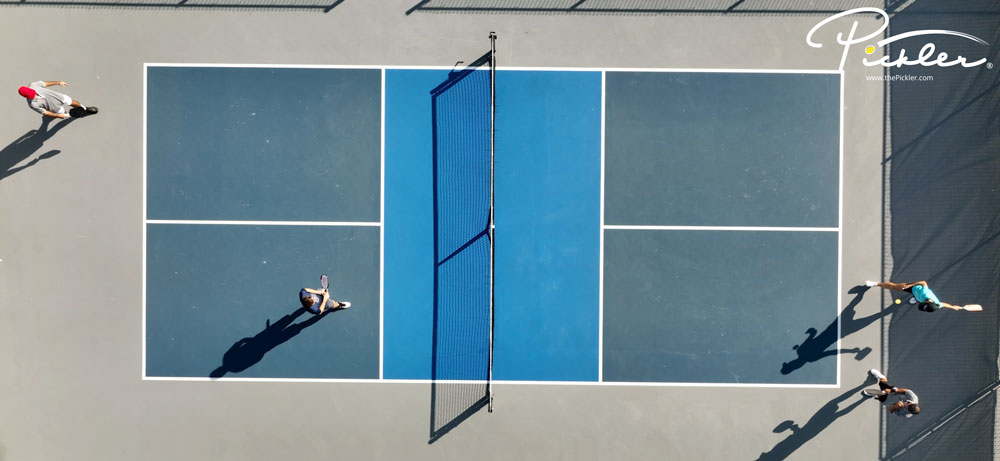
If you are switching (the second option, rather than using a traditional stack), you could also abort the stack if you feel too much pressure from your opponents on the serve. This requires a lot of communication and chemistry with your partner, but is a good option to have to avoid losing points as the receiving team.
Master how to stack on the pickleball court to improve your on-court strategy skills!
Do you stack on the pickleball court? Do you have any additional stacking or switching tips? Share with us by emailing stacie@thepickler.com.
WANT MORE PICKLEBALL TIPS AND STRATEGIES?
Want to learn new pickleball strategies, like the bait ball? Learn what the bait ball is now and how to use it.
Plus, if you want more pickleball tips and strategies on every aspect of your pickleball game, check out Pickler’s online video lesson collection called My Pro Pickleball Coach. My Pro Pickleball Coach is a fraction of the price of one clinic or even one lesson, and features over 140 video lessons (over 7 hours of instruction!), as well as a corresponding e-book. These online video lessons are available on demand 24/7 and breakdown every aspect of the sport of pickleball, including pickleball drills, strategy, and advanced concepts, so you will play your best pickleball.
